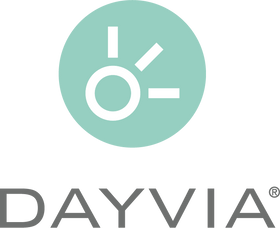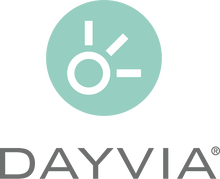FAQ - Frequently Asked Questions
Is light therapy a source of daily well-being ?
Yes, light therapy allows each of us to make up for the lack of light as soon as the days get shorter and thus regain energy and vitality during the long months of underexposure to light.
But not only that, light therapy goes much further by deeply resynchronizing everyone's internal clock. The internal clock regulates many functions of the body: sleep, vitality, happiness, appetite, body temperature, etc. Light therapy is therefore useful all year round to keep in shape and not only during the winter season.
How long will it take for me to notice the beneficial effects of my light therapy sessions?
You will be able to see the first effects within 4-5 days of starting your practice. What is important is to expose yourself every day for around 30 minutes per cycle for at least 4 weeks.
Symptoms such as insomnia, poor sleep, fatigue, low energy, depressive syndrome, bad mood, strong attraction to sweet tastes... gradually disappear one after the other.
Is it better to do a session every day or only from time to time?
To make the most of the benefits of light therapy, it is important to practice a session of around half an hour every morning for at least 4 weeks. Then there may be a little more flexibility depending on your individual reaction.
Do I have to stare at the lamp during my entire exposure?
No: It is not necessary to fix the lamp permanently, you can continue your activities (breakfast, reading, office work, computer, sport, makeup, etc.). The important thing is to keep the light in the field of vision at around 30-40 cm and keep your eyes open.
What does the unit of measurement “lux” mean?
Lux is the international unit for measuring illuminance, here are some examples:
1 lux = illumination received one meter from a lit candle at night.
100 to 500 lux = a lit living room or office.
2,500 to 10,000 lux = light therapy lamp with medical approval.
With the development of LED technology, Lux is used less and less, in favor of certain wavelengths of light optimized for optimal results. More modular, LEDs allow the spectrum to be targeted at effective wavelengths, ideally at 480 nanometers for optimal efficiency. The evolution of technology in favor of LEDs is profoundly changing the efficiency criteria of lamps. The race for lux and intensity of light is now giving way to better quality light that is more comfortable but also more effective.
Are there any contraindications to light therapy for certain people?
Studies have shown that light therapy can be practiced safely for all people who have no contraindications to exposing themselves to daylight since it is the equivalent in terms of intensity to natural light. in spring without UV rays which could be harmful.
However, there are some rare contraindications so it is preferable to consult your doctor before starting your sessions if:
- You are hyper sensitive to light
- You suffer from an eye disease
- You suffer from mental disorders
When in doubt, it is always preferable to consult even if light therapy is a non-invasive alternative medicine.
What is the difference between white light and blue light?
Blue light is one of the components of white light. For light therapy, blue-cyan wavelengths (480 nanometers) are the most effective among all the colors that constitute white light.
Not to be confused with the blue-violet light (430 nanometers) given off by screens and often criticized.
Specially targeted at the 480 nanometer wavelength, the blue light of Dayvia lamps is absolutely not harmful, the EN62471 certification confirms this point and validates that there is no photo-biological risk when using our lamps.
What is the point of blue light?
We have receptors in the eyes (melanopsin) which have a major role in regulating our biological clock, mood or energy, these receptors are very sensitive to blue even at low intensity.
Should I use blue light or white light?
Both are effective, everyone can choose according to their preference.
Some will prefer a very soft, low-intensity blue light and others a more intense white light.
Is a session with blue light shorter because its wavelengths are more effective?
Blue wavelengths are certainly the most effective but intense white light is also enriched in blue and in addition it includes other colors so in the end the recommended exposure time is a little higher with blue alone.
More informations :
When we use a prism to diffract white light we see that it is made up of all the colors of the rainbow including blue.
In addition to these blue photons naturally included in the white, the blue LEDs are also partially activated in the white light position, we do not see it because the blue is mixed with the green, yellow, red photons... which constitute the white.
Consequently, white light enriched with blue allows a slightly shorter session (30 min versus 45 min with blue alone), it is not because all studies show that blue photons are the most effective in blocking the melatonin which must be deduced that all the other photons included in white are ineffective (green, for example, plays a small role, particularly on elderly people and during the first minutes of the session).
Can I alternate white and blue light?
Yes, absolutely, it’s the total exposure time each day that counts.
I have heard about the risks for the eyes with certain LEDs, what about them?
There is a European standard to assess the possible photo-biological risks of a light source, this standard NF EN 62471 is not yet mandatory for manufacturers but will probably become so.
At DAYVIA, we have passed this standard and the test report provided by the French national testing laboratory (LNE) classifies our lamps in risk group 0 “risk-free”.
Our lamps can therefore be used safely without any time limit each day .
I heard on TV that you should avoid looking at the screens of smartphones, tablets, etc. in the evening before going to bed, so is it the same with the light of the lamp?
Blue light blocks the secretion of melatonin (“sleep hormone”) even at low doses.
As much as it is very beneficial in the morning because we need energy (blocking melatonin and secretion of cortisol), we must avoid exposing ourselves to it just before going to bed, as it could delay falling asleep.
At what time of the day do you advise me to expose myself to the lamp?
Exposure is recommended in the morning after waking up in almost all cases:
- Active, healthy people who want to keep their punch and energy
- People wishing to combat winter blues.
- Sedentary or bedridden people who wish to obtain additional daily exposure to light.
- Person in “late phase”: going to bed too late and difficulty waking up causing a lack of alertness during the day (concerns many teenagers).
In some cases exposure is recommended in the late afternoon or evening:
- People working at night to block the secretion of the “sleep hormone” (melatonin) and thus avoid phases of hypovigilance.
- People in advanced stages: go to bed early in the evening and wake up around 4/5 a.m. (this is quite rare and often concerns elderly people).
Concerning jet lag (crossing more than 3 time zones): a few days before a trip to the east (for example Asia) expose yourself in the morning earlier and earlier, conversely before a trip to The west (for example the USA) exposes itself later and later in the evening.
What happens if an LED breaks?
The LEDs have a lifespan of around 30,000 hours, which represents many years of maintenance-free use.
In all cases, you benefit from a two-year warranty on Dayvia products and even outside of warranty our products are repairable.
90% of DAYVIA lamps are designed and manufactured in France (Design, development, plastics processing, electronics, assembly, etc.).
Why do they benefit from medical approval?
In the word light therapy, there is “therapy”.
Therefore, any lamp that has this designation is considered a medical device and must comply with Directive 93/42/EEC and 2007/47 EC. DAYVIA lamps can be used in complete safety since they have been the subject of tests and audits which have enabled it to receive from the French notified body a certificate of conformity with these 2 directives valid throughout the European territory. .
What are the advantages of DAYVIA lamps?
LED technology makes it possible to offer 2 types of light (white or specific blue), both efficient with very low power consumption.
Dimmer switches allow for all-day use in the office or at home.
Dayvia is also part of an interesting social approach thanks to the production partnership with an ADAPEI (departmental association of friends and parents of maladjusted children) certified ISO 9001 and successfully audited each year by the French notified body (LNE G-MED ).
Is it better to wear sunglasses during exposure?
No: The therapeutic effect is caused by the light which penetrates through the retina towards the neuroreceptors… if there is a “sunglasses” type filter the desired effect is reduced or even canceled.
Note that it is also important to use the lamp in an environment normally lit by another light source (electric or natural light). Otherwise it's a bit like watching television in an unlit room, too much contrast is not recommended for the eyes.
Will I tan by exposing myself to the lamp?
No. For safe use, the light emitted is completely free of UV rays which play a role in tanning and vitamin D secretion.



